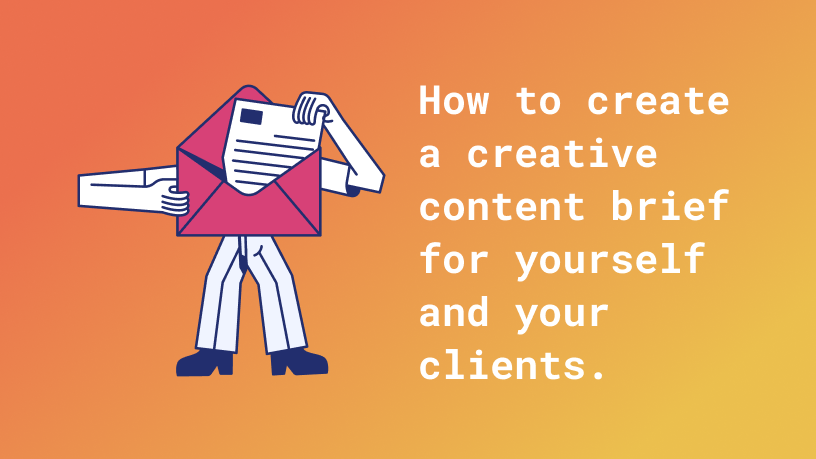As content creators, we strive to create and write engaging content that our target audience will love and benefit from. But that’s easier said than done, right?
If you’re struggling with figuring out what “engaging” even means and how you can ensure you’re targeting the right audience, this blog post is for you. We’ll explore how to define your audience, write engaging content, and verify that your work has the desired impact. So let’s dig right in!
What is engaging content, anyway?
Let’s first get on the same page and define the meaning of engaging content before we get into how to create it.
In general, engaging content:
- … holds your audience’s attention – they want to read the article from top to bottom or watch the entire video.
- … motivates users to interact with it. It has a catchy title, appealing visuals, or an interesting angle.
- … leaves a lasting impression. It entertains, educates, or empowers users to achieve a goal or task.
Content can come in many forms and does not have to be something written. Here are a few examples:
- Well-produced videos that entertain, educate, and emotionally connect
- Information-packed articles that provide actionable tips and insights
- Personal stories that resonate with your audience
- User-generated content that shares experiences with a tool
- Social media posts that invite conversations and interaction
Note: Since I specialize in writing, I will focus on this particular content form in this blog post, although you can also apply most of the information to other types of content.
Determine your target audience.
Your target audience is the group of people for whom you want to create content and who would benefit most from consuming it. Finding your audience can be an out-and-out easy process or a lengthy one, depending on your goals and the type and topics of the content you create.
Let’s say you’re a React developer who wants to share tutorials and tips about React. In this case, your target audience may be other React developers or front-end developers.
Often, however, you want to target people with whom you are not so closely acquainted, and things are no longer so simple and clear. Consider the following steps to quickly get an idea of your target audience(s):
- Identify your topic. First, define what you want to write about. Your product or service, your expertise in specific areas? Then determine what problems you want to solve and what benefits you offer. Finally, consider what kind of audience would benefit the most from what you’ve defined.
- Analyze your competitors. Look at how other businesses or content creators are doing it: Who are they targeting, and what is their message?
- Analyze existing data. Explore your website and social media analytics to further refine your understanding of your target audiences.
- Get to know them. Answer these questions to help define the right audience:
- Who are they? What is their role?
- What are their responsibilities, skills, and tasks?
- Why are they a great target audience for you?
- What are their pain points, and how can you empathize with them?
- How does your content or topics resonate with them?
- Create personas: If you have more than one or two target audiences, it can be super helpful to represent them in personas, including their demographics, interests, and pain points. Refer to these personas when you can’t decide whom to create content for.
Depending on your topic, you may have multiple audiences, such as developers and engineering managers. Not every content you create will (or must) appeal to all audiences. Instead, tailor it to a specific audience, addressing their unique pain points and providing solutions that they will find helpful.
Create and work with a content brief.
If you have an idea for a blog post or tutorial, I recommend creating a content brief before you sit down and start writing. Doing so helps you ensure your writing is valuable and engaging for your target audience.
In short, a content brief is a document in which you define your content’s cornerstones, such as goals and target audience. To ensure your content hits the mark with your target audience, you should clearly define your audience, their interests, pain points, and how your content addresses them (see previous section).
Additionally, this is where you define and write down your content’s desired outcome and goals: is it to educate, entertain, or inspire your audience?
I like to answer a series of questions in my content briefs to give me a clearer picture of what I’ll produce. Here are some of my most important questions – feel free to copy and adapt them to your needs!
- What problem(s) am I solving, and how is it relevant to my target audience?
- How do I solve the problem(s)?
- What is the goal of my article?
- What are the key takeaways?
- What specific action steps do I suggest to the reader?
Don’t forget to review your brief to decide if your idea resonates with your audience. Then, consider whether refining your idea could make the content more valuable.
Once you’re happy with your brief, you can start producing your content. Keep your brief handy and review it regularly to ensure your content doesn’t deviate from what you set out in your brief.
9 Tips: How to write engaging content
Having a good plan and a solid idea of your target audience alone won’t automatically produce great results. How you structure, write, and present your content dramatically affects how your target audience perceives it.
So here are nine tips and recommendations that have helped me write engaging content for my clients and my own blog for years:
Master the basics. You need to know how to structure content, research, create outlines, and write for your medium and audience. If you can’t do that yet, you need to learn by reading and writing a lot of content.
Keep learning. Keep studying and experimenting with the topics you write about so you can provide valuable information to your readers. Strive to become an expert in your field and share your experience and knowledge in your content.
Be authentic. It’s hard to be consistently fake. Instead, go for authenticity and trust that your audience will connect more easily with you as a person than with a company or a made-up persona.
Tell a story. Often, content is more engaging when you wrap it in a story. For example, share anecdotes that reflect your own experiences. In addition, stories can be more interesting to read and help your audience empathize and connect with you.
Write in a conversational tone. When you try to engage the audience in a conversation, the content becomes more engaging and fun. Ask questions, sprinkle in some humor, and speak directly to readers.
Use active voice. We often favor passive voice for technical content, which can lead to dry and dull content. Instead, use mainly active voice (for example, with the Hemingway app) to focus on the subject and make your content more dynamic.
Practice a lot. Maybe you’re a natural, maybe not. Either way, spend a lot of time practicing writing to improve – there’s usually no way around it!
Incorporate visuals. Images, illustrations, and diagrams make content easier to digest and help your audience understand your point of view.
Edit and proofread. Error-free content that flows well and is easy to read helps make your content more engaging and professional. Learn how to edit properly and use tools like the Hemingway app or Grammarly for support.
Check if your content is engaging.
After you publish your content, you may wonder how it’s performing – is it engaging your target audience? Here are some ideas to help you evaluate your work:
Feedback
Ask friends and colleagues who match your target audience for feedback. But even people unfamiliar with your topic can provide valuable input on your text and their overall impression of your content.
Social Media
If you share your content on social media platforms like Twitter, pay attention to likes and shares, especially comments, to understand how your content is being received.
Comments
Speaking of comments: Comments on your blog, Medium, or dev.to page can also show whether your content is engaging. When you allow comments, ensure you respond to questions and interact with your audience.
Analytics
Finally, it’s never a bad idea to look at analytics. For example, how do visitors get to your content, and how long do they stay? A high bounce rate could indicate that your content is not what people expected, so they click away quickly.
Take on board any feedback and suggestions you may receive over time, and don’t be afraid to revise your articles and tutorials to keep them relevant and valuable.
Conclusion
In this article, we looked at how to write engaging content for your audience:
- understand what “engaging content” means
- define your target audience(s)
- create a content brief to ensure you’re hitting your targets
- follow writing best practices
- practice practice practice
- get feedback and update your content
I hope my tips and recommendations can help you create content that brings your closer to your goals while connecting with your audience. Most importantly, however, enjoy creating content and sharing your thoughts and knowledge with others.





No responses yet